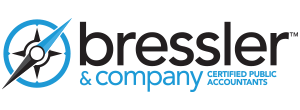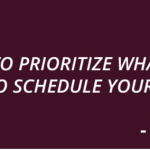Business Resilience: Focusing on the Priorities
As accountants, we like our clients to focus on activities that have the biggest positive impact on the business. That leads to business resilience and organizations which thrive even in uncertain economic times.
But how do we know what to prioritize? There is so much that could be done in so many different areas.
Let’s simplify this complicated subject. First, we need to identify and understand the key ‘drivers’ (or activities) which influence success, especially related to revenue, profit and enterprise value.
Lead generation
A business needs to create opportunities (or leads) whereby potential customers (prospects) express interest in their products or services. Usually, it is the job of marketing to generate these leads. We distinguish between ‘inbound leads’ where prospects contact the business and ‘outbound leads’ where opportunities are generated by reaching out through marketing campaigns. Some businesses can easily survive on just a few leads a year because they sell a ‘big ticket’ item while others need to generate thousands of leads.
| Example: A provider of boutique merger & acquisition advisory services may only do two or three projects per year requiring only 5 to 10 leads. Example: A provider of automotive insurance with over one hundred thousand active policyholders will require thousands of leads per annum in a very competitive market. |
Of course, we also have to measure QUALITY of leads. A high quality lead is one which has a strong probability of becoming a client AND fits the definition of a target customer.
Sales conversion
Business leads don’t put ‘bread on the table’ or money in the bank! They have to be turned into actual revenue. Sales conversion rates are determined by many factors such as the quality of leads, the skills and experience of your sales team and sales processes. A brilliant sales team will not succeed where the processes, technology and communication are poor.
| Example: A provider of HR management software invested in training of their sales team to improve technical understanding of the product. Sales conversion rates increased from 7% to 9% in 6 months. |
Revenue per customer
Converting sales can be simple if your products are offered at ‘giveaway’ prices. But that’s not good for business. The best situation is that your products are priced high enough to generate a good profit AND the customer believes they are receiving value for what they paid. Revenue per customer is not based only on the initial sale but throughout the relationship with the customer. Up-selling and cross-selling are important business strategies to maximize returns from your customer relationships.
| Example: A car dealer selling family vehicles makes a modest profit on each vehicle sale in a very competitive market. However, by offering a number of ‘accessories’, insurance and servicing, the revenue (and profit) per customer grows considerably over the period of ownership. |
Customer retention
Acquiring a new customer is an expensive and risky process. Retaining customers means your revenue source is relatively secure and you may be able to grow revenue per customer over time. ‘Loyal customers’ will likely say good things about you and even provide referrals. In some senses, they become part of your sales team. On the other hand, businesses with high customer churn (or turnover) have to replace departing customers and also face reputational risk.
| Example: A coffee shop in a busy CBD district serves breakfast and lunch. They started a loyalty program so customers could get discounts based on how much they previously spent. Customers returned more frequently than before leading to increased revenue. |
Expenses
We can break this down into the direct costs incurred producing your products (often referred to as Costs of Goods Sold or COGS) and your ‘general’ expenses which include everything else you spend money on. Almost all businesses face opportunities to reduce these expenses, sometimes significantly. Reducing expenses creates a more efficient organization and generally impacts the bottom line immediately.
| Example: A civil engineering business acquired a competitor three years ago. They continued to run both businesses independently including maintaining two offices. Then they consolidated the businesses into one headquarters resulting in a huge saving of rent and facilities costs. |
So… If those are the key ‘drivers’, which should you prioritize? This needs further analysis and each business is different. Business conditions may require an intense focus on expense reduction. However, if revenue growth is the goal, lead generation and sales conversion may require the most focus. One thing is certain: you will never optimize ALL of these drivers so prioritization is critical.
If you need assistance in selecting key drivers and setting up measurements, give Bressler & Company a call at 559.924.1225!





